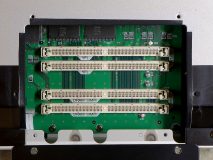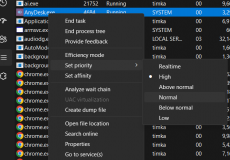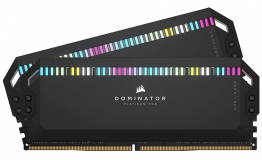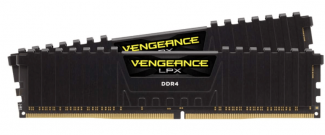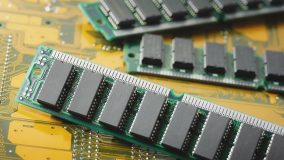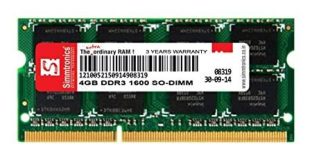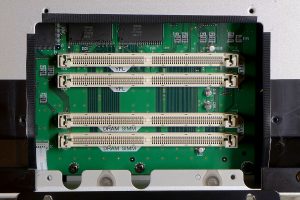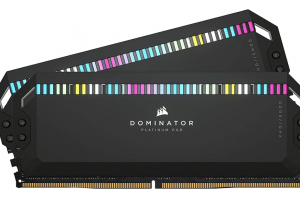If you are into computers and allied topics, you might have heard the term Cache Memory. Ever wondered which type of memory is primarily used as cache memory? It is actually a beginner-level question, and if you are an expert in computer technology, you should be aware of what cache memory is all about. But, we explained what type of memory is used as cache memory on a computer as many of our beginner readers may not be aware of it.
The cache memory used on the motherboard is generally a form of SDRAM. The cache memory is a specific form of SDRAM and is faster than the main memory source on your motherboard.
What is Cache Memory?
Before we can learn what type of memory is primarily used as cache memory, it is crucial to learn what exactly is cache memory. Once you learn that, you can find which memory is used as a cache memory.
Cache memory is the chip-based computer component that helps you retrieve data from the computer memory. The cache memory acts as a temporary storage and helps your computer to retrieve the data really faster.
The cache memory is ideally a faster memory module, and it acts as a main function that works as a buffer between the RAM and CPU. The cache memory holds the data and instructions that are frequently accessed. The cache memory makes the data to be available faster to the CPU when needed.
Types of Cache Memory?
The different types of cache memory would include Primary cache memory and Secondary Cache memory.
Primary Cache Memory
The primary cache memory is located on the processor chip itself. The cache size is generally smaller, and the time is taken to access it can be similar to the processor registers. This primary cache memory is also called L1 cache memory. This is the faster memory, and you would find it quite interesting and unique in its own right.
Secondary Cache Memory
The secondary cache memory is located in the middle of the memory cache. This is the main memory of the system. This cache is referred to as the L2 cache. You will also find the cache registered as L2, and L3 as well. The L2 cache does not get slowed by traffic on the main system bus.
L3 cache is a specialized memory developed for improving the efficiency and performance of the L1 and L2 cache.
Cache vs Main memory – An Overview
The DRAM is generally used as the computer’s main memory. This is used for the calculations of the data retrieved from the primary storage of your computer. Both main memory and cache memory are volatile in nature, and they lose all the data on them when power is turned off.
DRAM is faster than the L1, L2, and L3 cache. However, DRAM memory is less expensive. It can provide you with a faster speed than flash storage, hard drives, and SSDs.
DRAM needs to be refreshed frequently. The Cache memory, which is part of your RAM, does not need to be refreshed. The cache is built directly into the processor to ensure that it gets faster access to the memory locations.
Check out the following table to find the differences between the cache memory and main memory:
| Feature | Cache Memory | Main Memory (RAM) |
| Size | Smaller | Larger |
| Access Time | Faster | Slower |
| Purpose | Store frequently accessed data | Store data currently being processed |
| Hierarchy | Hierarchical (L1, L2, L3) | Flat |
| Persistence | Temporary | Persistent |
Advantages of the Cache Memory
The cache memory is designed to improve the speed of your computer and the processes that it performs. Apart, the cache memory also comes with a host of advanced features and options that you would find quite interesting.
A few of the advantages of cache memory can include:
- It is faster than RAM. your processor will be able to access your data faster
- It does not consume more power when compared to the RAM. It can be helpful in reducing the overall power consumption of the computer
- It has a very small form factor than the RAM. It would thus take less pace on your motherboard.
Disadvantages of the Cache Memory
As with any component, the cache memory also has its own disadvantages. We will check out the disadvantages associated with the RAM.
A few of the Cons that you would find with the cache memory include:
Types of Computer Memory: RAM, ROM, and Secondary Memory
In case you are confused about the different types of computer memory available, we decided to check out the different memory types used on a computer in addition to the cache memory.
RAM – Random Access Memory
RAM is the main memory on your computer. A part of this memory is called cache memory. It is a high-speed component that stores your data temporarily. The RAM memory is used to allow the access to the data immediately.
Accessing the data from the storage would take a lot of time. That is why RAM helps you fasten the process of helping you access the memory with ease. The RAM memory is volatile, which means the data in the RAM will be gone as soon as you power off the device.
There are two types of RAM viz – SRAM and DRAM.
SRAM
SRAM stands for Static RAM. This makes use of the bistable latching circuitry to store each bit. This can be the best in terms of speed. The SRAM is faster, and that is why this memory is used as cache memory. The SRAM is very expensive, and the SRAM memory is very less and ranges from 6 to 8 MB.
DRAM
DRAM stands for Dynamic RAM. It stores the data in a separate capacitor on an integrated circuit. Each of the memory cells in the DRAM consists of a bit of data. The data on the DRAM is constantly refreshed. That would make the DRAM slower than the SRAM.
Here is the table that should help you understand the differences between SRAM and DRAM:
| SRAM | DRAM |
| Static | Dynamic |
| Faster access time | Slower access time |
| More expensive | Less expensive |
| Requires constant power to maintain data | Must be periodically refreshed |
| Higher density difficult | Lower density easier |
| Lower power consumption | Higher power consumption |
| Volatile | Volatile |
ROM – Read Only Memory
ROM is a similar memory, just like the RAM. This ROM is a stable data process option to help you store data permanently. The storage on ROM is non-volatile. ROM is a programmable chip that enables you to store the instructions for starting up the system.
With the ROM, you will find your device stays active at all times, and no data is overwritten. The data on the ROM is never deleted or modified. That is precisely why it is called the Read Only Memory, which cannot be modified.
Secondary Memory
The secondary memory is also known as the external storage. The secondary memory can be volatile. The secondary memory is less important than the primary memory. The secondary memory is used for extra storage of more data.
SSDs and HDDs are the best options for the secondary memory options. A few of the other options that you would find much interesting include flash drives and NAS storage.
Frequently Asked Questions (FAQs)
Which type of memory is used as a cache?
The memory used for the cache memory is referred to as Static random-access memory (SRAM).
What are the different types of cache memory?
There are two types of cache memory used – Primary and secondary cache memory. The primary cache is located on the CPU, and the secondary cache memory is found on a separate chip close to the CPU.
Why is computer memory so important?
Memory is an electronic component that holds the instructions and data that a computer needs to access the data really quickly. It is the most essential part of the computer system, and it will not work in the absence of memory.
The Parting Thoughts
The cache memory is the unique option to help you in speeding up your computer performance. The cache memory assists the processor in handling your computers faster than the RAM and local disk. A 6 MB of cache should be the right pick for most of the scenarios. However, you would find the 8 MB to be one of the right picks that you would find much more unique and exciting.

